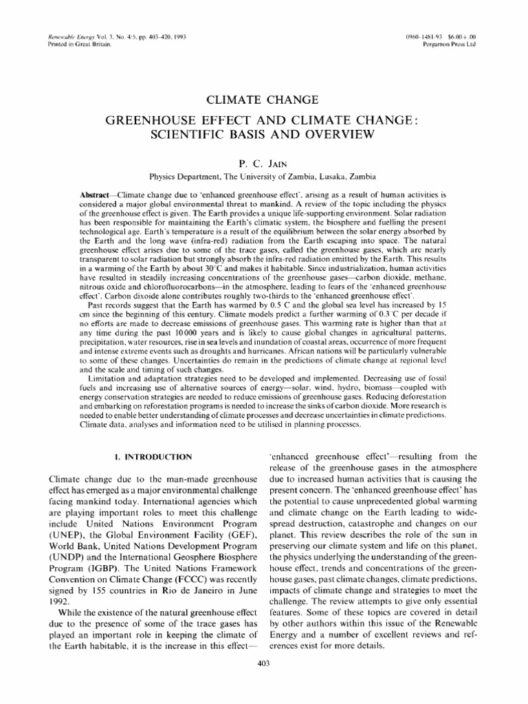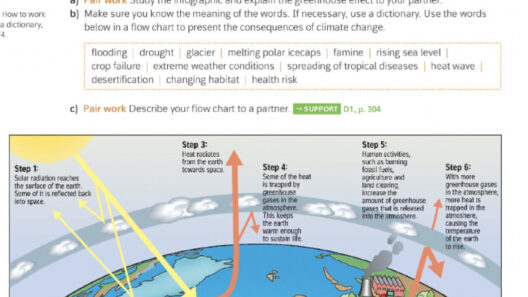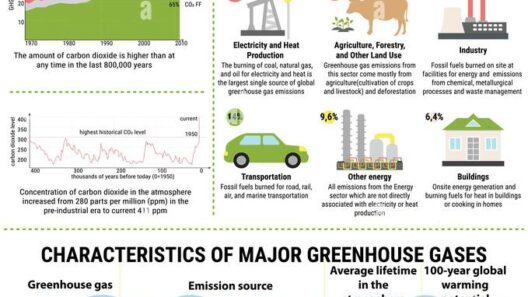The Greenhouse Effect is an undeniable phenomenon that significantly influences the Earth’s climate system. The rise in global temperatures, attributed to the accumulation of greenhouse gases in the atmosphere, is a pressing concern for our planet. It’s crucial to address this issue with practical solutions to mitigate its impact on climate change. This article explores actionable strategies for individuals, communities, and governments to prevent the greenhouse effect and safeguard our environment.
Understanding the Greenhouse Effect
The Greenhouse Effect occurs when certain gases, including carbon dioxide, methane, and nitrous oxide, trap heat in the earth’s atmosphere. This natural process is essential for life as it keeps our planet warm. However, human activities—such as burning fossil fuels, deforestation, and industrial processes—have significantly increased the concentration of these gases. Consequently, this leads to global warming and drastic climate change.
To effectively combat this phenomenon, a multi-faceted approach is necessary. By understanding the underlying causes, we can implement strategies that target these sources of greenhouse emissions.
Transitioning to Renewable Energy Sources
One of the most effective methods to reduce greenhouse gas emissions is to shift toward renewable energy sources. Fossil fuels, such as coal, oil, and natural gas, are the primary contributors to greenhouse gases. By investing in clean energy options like solar, wind, hydroelectric, and geothermal power, we can significantly diminish our carbon footprint.
Solar energy harnesses sunlight and converts it into electricity, resulting in zero emissions during energy production. Wind energy utilizes turbines that generate energy from wind currents, providing a constant and renewable source. Similarly, hydroelectric power generates energy from flowing water, emitting minimal pollutants. Governments and organizations should increase incentives for businesses and households to utilize these sustainable resources.
Promoting Energy Efficiency
Energy efficiency is another crucial component in preventing the greenhouse effect. By improving energy efficiency in homes, businesses, and transportation, we can reduce overall energy consumption and lower emissions. Simple measures, such as upgrading to energy-efficient appliances, insulations, and LED lighting, can lead to substantial energy savings.
In transportation, encouraging electric vehicles (EVs) and investing in public transit can significantly cut down emissions from gasoline and diesel-powered cars. EVs produce zero tailpipe emissions, making them an environmentally friendly alternative. Moreover, promoting biking and walking improves not just energy use but also public health, and reduces road congestion.
Implementing Practices in Agriculture
Agriculture is both a source of greenhouse gases and a potential solution. Practices such as regenerative agriculture, agroforestry, and organic farming can drastically reduce emissions and enhance carbon sequestration in the soil. Regenerative agriculture focuses on restoring soil health and biodiversity, thereby capturing carbon dioxide from the atmosphere.
Agroforestry integrates tree planting with agricultural practices, providing shade, improved soil quality, and additional carbon capture. This simultaneously enhances food security and biodiversity. Furthermore, reducing food waste at every level—from farm to consumer—can help limit methane emissions, particularly from landfills, where organic waste decomposes aerobically.
Advocating for Afforestation and Reforestation
Forests act as crucial carbon sinks and play a significant role in the Earth’s climate system. Planting trees through afforestation (planting trees in areas where there were none) and reforestation (replanting trees in deforested areas) are vital activities that can absorb significant amounts of carbon dioxide from the atmosphere. Not only do trees sequester carbon, but they also provide habitats for diverse wildlife and contribute to local ecosystems. Governments and organizations worldwide should prioritize policies that promote large-scale tree planting initiatives.
Encouraging Sustainable Practices and Behavioral Change
Individuals also play a pivotal role in combating climate change. Small, everyday actions collectively create profound impacts. Reducing, reusing, and recycling materials can minimize waste and conserve resources. This includes being conscientious about consumption, opting for sustainable products, reducing meat intake, and employing minimalistic lifestyles.
Moreover, raising awareness about climate change and the greenhouse effect within communities can inspire collective action. Educational campaigns in schools and local organizations empower citizens to adopt eco-friendlier habits.
Policy and Legislative Support
Governments have the power to enact and enforce policies that promote environmental sustainability. Establishing stringent regulations on emissions, incentivizing companies to adopt greener practices, and investing in research and development for new technologies are all critical actions. Importantly, international cooperation is essential to address the global nature of climate change effectively.
Global agreements, such as the Paris Agreement, aim to unite nations in their fight against climate change and greenhouse gas emissions. Policymakers must prioritize these agreements to align efforts globally and hold nations accountable for their commitments.
The Conclusion: A Collective Responsibility
The fight against the greenhouse effect and climate change is a collective responsibility. By embracing renewable energy, promoting efficiency, implementing sustainable agricultural practices, advocating for reforestation, and advocating for policy changes, every individual and institution can contribute. A united effort is essential to pave the way for a sustainable future. As global citizens, understanding our profound impact on the environment is crucial in driving meaningful change. Together, we can preserve the planet for future generations, ensuring a healthier, more sustainable environment.







